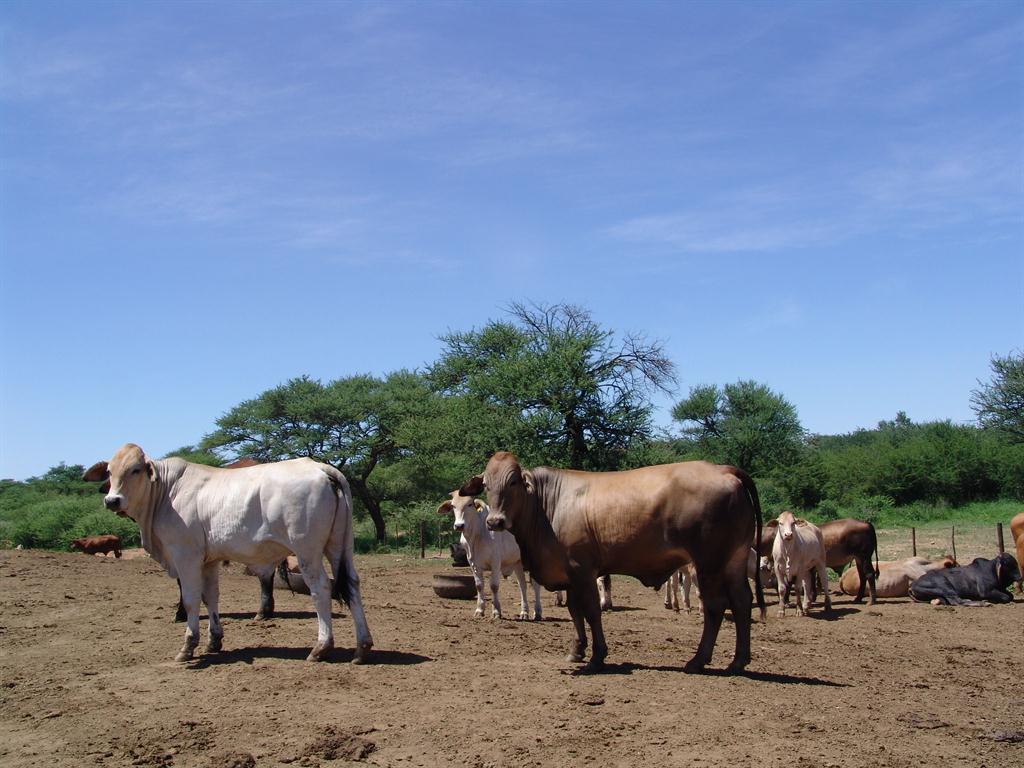Meatco feels brunt of prices
A bumper crop harvest in South Africa has pushed up the demand and price for local weaners to that market and farmers are selling there.
The high prices that Namibian weaners are currently selling at in South Africa are negatively impacting on Meatco's entire business value chain.
According to the company, the high weaner price paid for by South African agents at auctions locally, continues to impact the amount of live animals available for purchase by Meatco's feedlots and other facilities.
The company says this will also have an impact on the throughput of slaughterable animals available to abattoirs in the next two to three years.
Meatco says the sales can be ascribed to the good rains that South Africa received during the past season which created a bumper grain harvest, resulting in an oversupply that brought about a decrease in prices of fodder.
This led to an increase in the demand for weaners at South African feedlots.
“The biggest challenge for Namibia at the moment is the lack of producing grains and fodder in bulk to retain weaners exported to South Africa,” said Goliath Tujendapi, the Meat Board's manager for trade and strategic marketing.
“Through this, between 160 000 and 200 000 weaners continue to be exported to that market every year.
Due to high weaner prices as a consequence of the low cost of maize prices in South Africa, there was a notable increase in live exports with 12.4% year-on-year during the period between January and May.
“After the previous drought, producers in South Africa are rebuilding their herds and slaughter-ready cattle are becoming limited. This artificially increases the demand for slaughter cattle and the extension of feedlotting and subsequently explains the increased demand for Namibian weaners,” the Meat Board said.
The Namibian weaner prices followed an upward trend between January and May this year, moving on average from 16.96/kg in January to 21.07/kg in May.
According to the Meat Board livestock producer prices are expected to remain sideways for the second quarter of 2017.
“Weaner prices are expected to increase steadily in the short term but are expected to stabilise during the last quarter of the year. This situation might push the export figures to a disadvantage for the slaughter industry.”
South Africa has also reported that the drought resulted in a huge under–supply of livestock and that there is a great demand for weaners in the country.
Although drought conditions are starting to fade it is said that it will take about a year or two for the situation to normalise in South Africa.
At the end of July live weaners were selling for N$30/kg tot N$31/kg in South Africa while in Namibia the highest price reached yet for the year stood at N$25.87/kg.
ELLANIE SMIT
According to the company, the high weaner price paid for by South African agents at auctions locally, continues to impact the amount of live animals available for purchase by Meatco's feedlots and other facilities.
The company says this will also have an impact on the throughput of slaughterable animals available to abattoirs in the next two to three years.
Meatco says the sales can be ascribed to the good rains that South Africa received during the past season which created a bumper grain harvest, resulting in an oversupply that brought about a decrease in prices of fodder.
This led to an increase in the demand for weaners at South African feedlots.
“The biggest challenge for Namibia at the moment is the lack of producing grains and fodder in bulk to retain weaners exported to South Africa,” said Goliath Tujendapi, the Meat Board's manager for trade and strategic marketing.
“Through this, between 160 000 and 200 000 weaners continue to be exported to that market every year.
Due to high weaner prices as a consequence of the low cost of maize prices in South Africa, there was a notable increase in live exports with 12.4% year-on-year during the period between January and May.
“After the previous drought, producers in South Africa are rebuilding their herds and slaughter-ready cattle are becoming limited. This artificially increases the demand for slaughter cattle and the extension of feedlotting and subsequently explains the increased demand for Namibian weaners,” the Meat Board said.
The Namibian weaner prices followed an upward trend between January and May this year, moving on average from 16.96/kg in January to 21.07/kg in May.
According to the Meat Board livestock producer prices are expected to remain sideways for the second quarter of 2017.
“Weaner prices are expected to increase steadily in the short term but are expected to stabilise during the last quarter of the year. This situation might push the export figures to a disadvantage for the slaughter industry.”
South Africa has also reported that the drought resulted in a huge under–supply of livestock and that there is a great demand for weaners in the country.
Although drought conditions are starting to fade it is said that it will take about a year or two for the situation to normalise in South Africa.
At the end of July live weaners were selling for N$30/kg tot N$31/kg in South Africa while in Namibia the highest price reached yet for the year stood at N$25.87/kg.
ELLANIE SMIT





Comments
Namibian Sun
No comments have been left on this article